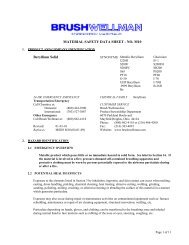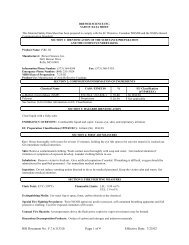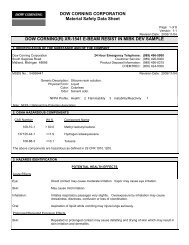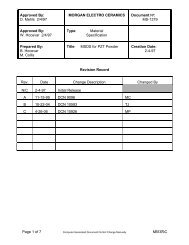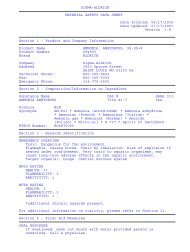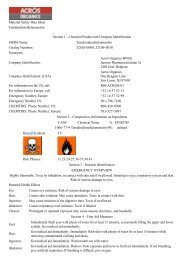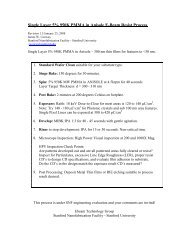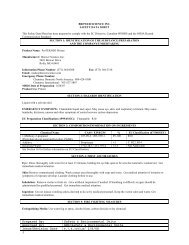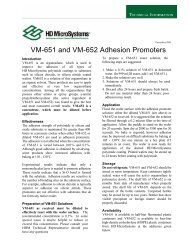EE 410 / Saraswat Handout #3 - Stanford Nanofabrication Facility
EE 410 / Saraswat Handout #3 - Stanford Nanofabrication Facility
EE 410 / Saraswat Handout #3 - Stanford Nanofabrication Facility
Create successful ePaper yourself
Turn your PDF publications into a flip-book with our unique Google optimized e-Paper software.
<strong>EE</strong><strong>410</strong> / <strong>Saraswat</strong> <strong>Handout</strong> <strong>#3</strong><br />
o Remove the wavers and run “POLYPUMP”.<br />
• The target poly thickness is ~500 nm.<br />
• This step takes ~3 hrs of tube time.<br />
13. PM <strong>#3</strong> Polisilicon (STEPS 3.000-3.190)<br />
Poly Thickness (STEP 2.420):<br />
The Nanospec can measure semi-transparent films (thin poly), but requires the underlying oxide<br />
thickness. In this case examine the poly over the active cuts and enter the measured gate oxide<br />
thickness.<br />
• Make sure that the Nano-spec is focused on a poly region not covered by resist.<br />
• Measure the poly thickness on T, using the Nano-spec, the poly on oxide program, and the<br />
10X objective.<br />
• Use F-6 (poly on gate oxide) on the selected wafer dies.<br />
• Measure 5 points on the wafer (flat down, toward you) and record the results below and on<br />
the runsheet:<br />
Top_______________<br />
Left _________________ Center _____________ Right _______________<br />
Bottom _____________<br />
Photomask <strong>#3</strong> Polysilicon Lithography<br />
This step delineates the gates. It is important that the lithography be performed with care to keep<br />
the gates the correct lengths. Also, examine that the gate/active overlap is sufficient.<br />
The litho process steps are:<br />
• Singe & Prime in the yes<br />
• Spin coat using svgcoat/2 programs 9 (no prime), 7 (1.0 µm of 3612 resist w/2 mm EBR),<br />
and 1 (prebake 90 C for 60").<br />
• Expose on the asml<br />
Job name: <strong>EE</strong><strong>410</strong>R_1<br />
Layer ID: 3<br />
Layer Number: POLY<br />
Image ID: POLY<br />
Reticle ID: <strong>EE</strong><strong>410</strong>RET2<br />
• Post-exposure bake on svgdev/2 using programs 9 (no develop) and 1 (post-expose<br />
bake@110º C for 60").<br />
• Resist develop on svgdev using programs 3 (develop) and 1 (postbake@110º C for 60")<br />
• Inspect. Check the alignment Verniers and record the alignment offsets. You should be<br />
able to align to within 0.5 µm from the ACTIVE level.<br />
• Rework as necessary.<br />
Vernier <strong>#3</strong>1: POLY to ACTIVE (offset: ____ / ____ )<br />
Revised Jan. 11, 2008 Page 22/47



